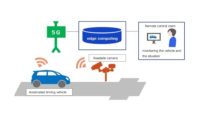DETROIT—As electric vehicles continue to enter the mass market, aluminum demand will grow through the end of the decade, claims a new study conducted by Ducker Carlisle Worldwide LLC. The “2023 North American Light Vehicle Aluminum Content and Outlook” report, released by the Aluminum Association, indicates that demand for more sustainable transportation will help drive an increase in market share for aluminum content by nearly 100 net pounds per vehicle from 2020 to 2030.
Aluminum growth will be driven by EV components such as battery housings, e-motors and drives, door sills and rockers.
“Consumers want cars and trucks that are more sustainable, more electrified and filled with more technology,” says Mike Keown, chairman of the Aluminum Transportation Group and CEO of Commonwealth Rolled Products. “Automakers are responding with a host of innovations, all enabled by high-strength, low weight and infinitely recyclable aluminum.
“Greater collaboration with automakers will bring to life this vision, set forth by the aluminum industry in its 10-year roadmap,” claims Keown. “As mega-casting and closed-loop recycling continue to advance, aluminum producers remain vital partners in helping automakers achieve aggressive carbon neutral targets.”
The report identifies several key market themes, including:
*The proliferation of EVs will dramatically change the light vehicle landscape. Electric vehicle share of production nearly doubled from just under 3 percent in 2020 to approximately 6 percent in 2022. By 2030, EVs, which on average are more aluminum-intensive that ICE vehicles, are expected to exceed 36 percent share of production.
*There is a trend toward larger vehicles that have more aluminum content. Consumers’ affinity toward larger vehicles continues, helping drive increased aluminum growth. In 2022, light trucks outnumbered cars four to one and contained more than 30 percent more aluminum than cars.
*Aluminum content per vehicle will continue its uninterrupted growth. A net gain of 56 pounds per vehicle is expected between 2020 and 2025, with aluminum growing by almost 100 net pounds per vehicle (PPV) between 2020 and 2030 to 550 PPV, a 233 percent increase over 1990, when aluminum accounted for just 165 PPV.
“Electrification positively affects aluminum content and compensates for the transition away from power train and transmission components, which are primarily aluminum,” says Abey Abraham, principal of automotive and materials at Ducker Carlisle. “As electrified power trains create significant growth opportunities for aluminum, more stringent fuel economy standards also continue to promote mass reduction in ICE vehicles.”



